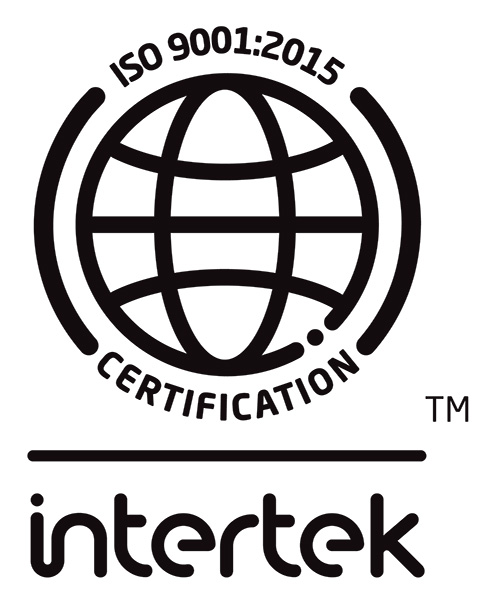
by Robert Rennie
The polymyxin complex is part of a large complex of cyclic lipopeptides that include polymyxins and daptomycin. There are at least 15-16 of these molecules, but only the former are used in clinical medicine. They are subdivided into groups that affect gram-negative bacteria (polymyxin), gram positive bacteria (daptomycin), antifungal and anti-mycobacterial agents. Daptomycin is a semi-synthetic cyclic lipopeptide isolated from Streptomyces roseoporus. It has very different microbial and clinical activities than other polymyxins, a primary requirement of calcium ions for laboratory testing, and specific pharmacokinetics and pharmacodynamics.
This article will focus on the two major polymyxins (colistin and polymyxin B) that affect gram-negative bacteria. These compounds were originally isolated over 60 years ago from Bacillus polymyxa.
Mode of action
The polymyxins of note that affect gram-negative bacteria and are used therapeutically in most parts of the world are two related compounds – colistin (polymyxin E) and polymyxin B. They are large molecules with molecular weights between 1,150 and 1,200 daltons. They are water soluble except in alkaline solution. (between pH 5.5 to 7.0).
The polymyxins act by penetrating the cell-wall of several species of gram-negative bacteria. Because of their large molecular mass, they are able to penetrate the wall, by chelation of divalent cations, thus causing the cell wall to destabilize. They then interact in with components in the cell membrane (phosphatidylethanolamine) which is rich in gram-negative bacteria, but in low concentration in gram-positive bacteria. The precise mode of action is not fully understood, but it is likely that they act like a detergent within the membrane resulting in disruption of the membrane and leakage of intracellular moieties from the cell, thus killing the cell. Some investigators liken the action of the polymyxins to washing the cells in “soap”.
Antimicrobial activity
It is somewhat difficult to measure the precise antibacterial activity of these compounds. They are not active against gram-positive bacteria. They are active against a variety of species of gram-negative bacteria, with MICs that vary from 0.01 mg/L to 8 – 16 mg/L. It appears that Proteus species, and Serratia marcescens are intrinsically resistant (MICs > 128 mg/L). Broadly, some Enterobacteriaceae (Escherichia coli, Klebsiella, Enterobacter, Salmonella, Shigella) and Pseudomonas aeruginosa are affected by both polymyxin B and colistin, whereas only limited data is available on other genera for colistin (Yersinia, Acinetobacter, and Citrobacter).
In vitro laboratory testing
Most testing in the laboratory is performed using colistin and both microdilution with cation-adjusted Mueller Hinton broth. It is important to use colistin sulfate in the test, because colistinmethanesulfonate is a pro-drug of colistin, and conversion to the active compound may cause testing issues and errors in MIC tests. Because the polymyxins are such large molecules, testing needs to be standardized as much as possible. Broth microdilution trays should be made in plain untreated polystyrene. Additives such as polysorbate 80 are not recommended.
Susceptibility testing by other methods such as disc diffusion, gradient-endpoint diffusion and agar dilution are not recommended. The antimicrobials diffuse variably from discs, and the large molecular weight of the agents does not lend well to methods other than broth-micro-dilution. Studies on other methods continue to be investigated, but until the obstacles mentioned can be overcome they must remain in the research environment.
Quality control ranges for broth micro-dilution have been established by EUCAST and CLSI for E. coli ATCC 25922 (0.25 – 2.0 mg/L) and P. aeruginosa (0.5 – 4.0 mg/L). There are no clinical breakpoints established in EUCAST – only Epidemiological Cut off Concentrations (ECOFFs). For some Enterobacteriaceae (eg E. coli, Enterobacter cloacae, Klebsiella) the ECOFF is 2.0 mg/L; for P. aeruginosa the ECOFF is 4.0 mg/L. There are no ECOFFs for Acinetobacter baumannii complex. CLSI, in it’s M100:2019 version reports breakpoints of ≤ 2.0 mg/L (S), and ≥4.0 mg/L (R) for P. aeruginosa and A. baumannii complex , and ECOFFs of ≤ 2.0 mg/L for Klebsiella, E. coli, Enterobacter cloacae and Raoultella.
CLSI also provides disc diffusion quality control ranges of 11 – 17 mm for E. coli ATCC 25992 and P. aeruginosa ATCC 27853. There are no disc diffusion quality control ranges in current EUCAST documents. Until there is better understanding of the linkage between the pharmacokinetics of colistin and appropriate breakpoints it is recommended that only the ECOFFs are used to tentatively determine if an isolate is more likely to be relatively susceptible to the therapeutic polymyxins. Similarly disc quality control ranges should only be considered tentative until there is consensus from international groups.
Polymyxin resistance
Antimicrobial resistance to the polymyxins has historically been relatively uncommon. Reports have been made regarding resistance in P. aeruginosa, A. baumannii complex and K. pneumoniae, but these are uncommon. Recently, it has been shown in several studies that colistin resistance can be plasmid-mediated, and this has raised concern about clinical use of the drug in mixed population infections.
Further, it has also been shown that hetero-resistance to colistin may occur in P. aeruginosa and A. baumannii complex isolates. Despite rapid bactericidal effects of the agent, re-growth has been observed in the presence of high concentrations of the drug, suggesting that small proportions of the population in these isolates are highly resistance to colistin and polymyxin B.
Pharmacokinetics/Pharmacodynamics/Toxicity
Almost all studies indicate that the polymyxins are excreted by non-renal pathways.
Studies with multi-drug resistant P. aeruginosa, Klebsiella and A. baumannii complex indicate that the polymyxins have potent concentration dependent killing of the species. There in no known post-antibiotic effect.
In studies on the plasma concentrations of active colistin, it has been observed that the active agent (colistin) reaches concentrations of between 0.5 and 3 mg/L 6 – 8 hr after administration. The peak concentrations are not significantly affected by renal function suggesting there is re-absorption from the kidneys and further that renal excretion is insignificant.
The pro-drug (colistinmethanesulfonate) is excreted through the kidneys. There is further data regarding the conversion to active colistin that suggests clinically two important factors. 1) The important PK/PD parameter for the polymyxins is the Area under Curve/ MIC (AUC/MIC), and 2) the peak concentrations are not significantly greater than MICs that would support use of the polymyxins alone for treatment despite their apparent potent concentrations dependent killing of bacterial cells.
The most common adverse reactions and toxicity have been described as nephro- and neuro-toxicities. Allergic reactions may also occur, but the frequency is relatively smaller. Colistin has been used in the cystic fibrosis population with relatively few side effects, in cystic fibrosis patients and in cases of bronchiectasis, but usually in combination with other agents or surfactants.
Summary
The foregoing indicates that the therapeutically active polymyxins (colistin and Polymyxin B) have a relatively narrower spectrum of activity. but may be effective if used in combination with other susceptible antimicrobial agents. In susceptible gram negative species they have rapid concentration dependent killing by intercalation with cations (calcium and magnesium) in the bacterial cell membrane and disruption of the membrane in a detergent-like process. Leakage of internal cell contents causes rapid killing.
The relative lack of resistance is potentially a positive attribute of these agents, but they do not reach high AUC/MIC ratios such that their use alone for effective treatment is suspect.
Antimicrobial susceptibility testing is still problematic and requires more extensive study to establish clinical breakpoints and quality control parameters for other that broth-microdilution tests.
The current problematic issue is routine testing in the clinical laboratory. It is really only currently possible to accurately perform broth micro-dilution testing according to parameters described above. With quality control in place, isolates of appropriate species that have MICs < 2 mg/L may be considered relatively susceptible. In those cases, colistin may be useful if used in combination with another agent to which the micro-organism is susceptible. Most laboratories at this time will be unable to confidently perform testing and reporting, so isolates for test will need to be sent to reference laboratories that are equipped to undertake such investigations under prescribed conditions.
Dr. Rennie is a Professor Emeritus (University of Alberta) and Clinical Microbiology Consultant, member of the Canadian Standards Association ISO Z252/TC212 Committee on Quality Laboratory Management, Deputy Convener of ISO TC212 Working Group 4 (Microbiology and Molecular Microbiology), and member (former Chair) of the Clinical Microbiology Proficiency Testing (CMPT) Microbiology Subcommittee.
Some aspects of this article reflect opinions of the author based on current understanding of the topic.
References
Peptide antibiotics. 2005 . In Antimicrobial Agents: Antibacterials and Antifungals. Ed. A. A Bryskier. ASM Press. Washington,DC. USA. 2005. Pp 826 – 879.
Polymyxins. 2017. R.L. Nation, J. Li. In Kucer’s The Use of Antibiotics. 7th ed. Editor in Chief M.L. Grayson. CRC Press. Boca Raton Fl. USA. Pp. 1420 – 1449.
European Committee on Antimicrobial Susceptibility Testing (EUCAST) 2019. Recommendations for MIC determination of colistin (polymyxin E) as recommended by the joint CLSI-EUCAST Polymyxin Breakpoints Working Group 2016.
EUCAST 2019. MIC and zone diameter distributions and ECOFFs. www.eucast.org.
Clinical and Laboratory Standards Institute (CLSI). 2019. Wayne PA. USA. M100: 2019.




